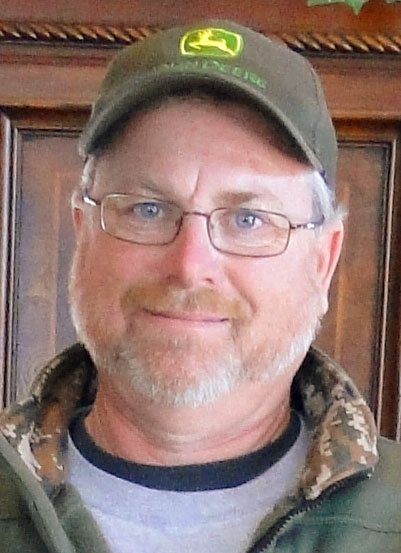
James and Mary Ann Skelton live on 11 acres in Springdale, Ark., but also rent an additional 300 acres in the Springdale area. They are also in a partnership with James‘s brother on an 800-acre farm near Winslow, Ark. Sons Louie and Joe bought out their uncle’s cattle operation and equipment and are partners with James and Mary Ann in a commercial herd while James and Mary Ann have a registered Beefmaster herd of their own. The commercial herd is comprised of 165 Angus and Charolais cows. The bulls put with these cows are registered Beefmaster bulls making the progeny E-6 cattle. James said, “E-6 replacement females are very difficult to find, so we raise our own.” James and Mary Ann’s registered herd consists of 100 cow/calf pairs, 15 bulls and 30 yearling heifers, all registered Beefmaster.
James strongly prefers Beefmaster cattle because of their six essentials characteristics: fertility, disposition, weight, conformation, milk production and hardiness; therefore using Beefmaster bulls in both herds. James selects his bulls according to birthweight, IMF (intramuscular fat) measurement and ribeye size and will not purchase any bull with ribeye under 14 square inches. One of his bulls has a 16 square inch ribeye and a 3.3 IMF. James said, “While I prefer Beefmaster because they have good ribeye and intramuscular fat, I also like the appearance of eared cattle and appreciate the mild disposition.” Because James believes he has high-quality bulls and because he believes it is too time-consuming, James rarely uses AI.
James retains ownership of his Beefmaster steers from birth to harvest. He sends calves to Irsik and Doll Feedyard in Garden City, Kan., for finishing. One of the biggest advantages is being able to keep track of calf performances in order to continually improve herd quality. Also, he sells by dressed weight because he doesn’t want to leave any money on the table for somebody else. By retaining ownership, James earned $400 more per head last time he sold calves. He sent the calves in at 610 pounds and sold at 1,400 pounds with a daily weight gain of 3.25 pounds.
James keeps all his Beefmaster bull calves until they can be quality sorted and then bands those selected for market while commercial bull calves are castrated as soon as they are born. The Beefmaster bull calf selection process is comprised of sending the calves to Missouri for bull testing though he occasionally will send replacement heifers as well looking for pedigree, ribeye size, and how well the heifer will fit into the herd as far as providing genetic variety.
All of Skelton Beefmaster bulls are trichomoniasis and semen tested before sold to a buyers so they are certain of each animal’s health. Calves are vaccinated once at weaning and then two to three weeks later. Deworming is done with either a pour-on product or an injectable one with the specific composition changed constantly to prevent parasite immunity. The cattle are dewormed twice a year, once in the spring and once in the fall. While the commercial cattle receive supplements through minerals and range cubes, the registered herd and weaned calves are given a five-way commodity mix with 15 percent protein additionally.
The Skelton Beefmaster program is a successful one. The Skeltons have won Breeder of the Year for the Central States Beefmaster Association and Performance Breeder of the Year for Beefmaster Breeders United. In order to qualify for those titles, James must have specific records on steers, which he then gives Beefmaster Breeders United so they can build a database on his herd for comparison with other breeders. James said, “While the Angus Association may have started the data building concept, the Beefmaster organization is advancing rapidly and producing superior beef.” Technicians come to the farm and use ultrasound to measure ribeye size, IMF, back fat and rib fat. They have computer programs that formulate the required data on the spot at cost of $13 a head. Three of these technicians work in the area, one in southwest Missouri, one in Welch, Okla., and one in Harrison, Ark.
James is a retired fireman with both of his sons working off the farm as firemen. The uniqueness of a fireman’s schedule allows the entire operation to work. Although many firemen build houses on the side, the Skeltons believe in raising cattle. They are able to cover all animal needs while maintaining their firemen positions. James said, “It’s a perfect setup. We are able to serve our community as firemen and pursue an agricultural lifestyle at the same time. It’s a win-win for everyone.“







